Growing tomatoes in a greenhouse in winter: varieties, soil, lighting

The production of vegetables in winter requires well-equipped greenhouses, equipped with heating and properly organized lighting. Growing tomatoes in a greenhouse in winter is no exception. In addition to the technical arrangement of heated greenhouses, you will need to select the correct assortment of tomatoes for indoor soils and create a high-quality soil mixture.
Content:
- Tomato varieties for winter greenhouses
- Preparing soil in a greenhouse
- Growing tomato seedlings for winter greenhouses
- Transplanting seedlings to a bed in a greenhouse, fruiting
Tomato varieties for winter greenhouses
Growing vegetables in heated greenhouses is quite an expensive process. In order for material costs to result in a qualitative and quantitative tomato harvest, the greenhouse area must be used as efficiently as possible.
This can be done using not only horizontal beds, but also vertical volume. You can make maximum use of even a small greenhouse by selecting tomato varieties with unlimited vertical growth. These tomatoes are called indeterminate.
Currently, vegetable growers are actively using more than a hundred varieties and hybrids for winter cultivation. First of all, you should pay attention to the following hybrids of foreign selection:
- President F 1, tomatoes ripen on average 95 days after germination. The bushes are powerful, the tomatoes are bright, red, and universally used.Fruit weight is up to 200 grams, the hybrid is productive, from 1 sq. m you can get more than 20 kg of products.
- Anabel F 1, tall bushes, yield up to 22 kg per square meter. meters, the fruits are storable with elastic, tasty pulp, in good presentation.
- Raisa F 1, one of the productive hybrids, produces up to 24 kg of tomatoes per square meter. meters, the fruits are round, red, weighing up to 120 g, ripen in 100 days. The hybrid is suitable for industrial cultivation of tomatoes in winter greenhouses.
Among the domestic hybrids, the following deserve attention:
- Vasilievna F 1
- Miracle F 1
- Evpator F 1
- Dobrun F 1
Acquisition seed material - a very important moment. This is best done in specialized stores, paying attention to the expiration date of the seeds. After two years of storage, the germination capacity of tomatoes decreases.
Preparing soil in a greenhouse
As a rule, the yield of tomatoes in closed ground is much greater than in open ground. Consequently, a greater load is placed on the soil, and the consumption of nutrient reserves increases.
Considering that the bulk of the roots of tomato bushes grow to a depth of 30 - 35 cm, a layer of soil in the greenhouse is needed up to 40 cm thick. It is advisable to harvest the soil from virgin lands.
The next important point is the enrichment of the land with organic matter. Its total amount must be at least 1/5 of the part. Rotted sawdust, leaves, mature humus and compost are suitable for this. You can also use a special type of earthworm to obtain vermicompost - the Californian red worm. One family will regularly enrich the soil with organic matter. The “work” of these worms also increases the porosity of the soil.
In order to soil disinfection in a greenhouse and reducing the number of larvae of various insects that can breed en masse in damp soil, it is advisable to use the drug Batolin - T.
Treatment with the biological product "Nematofagin" will also have a positive effect on the harvest; it will protect future plantings from nematodes. When digging up soil in a greenhouse, you can use fumigation of the room with sulfur bombs.
Growing tomato seedlings for winter greenhouses
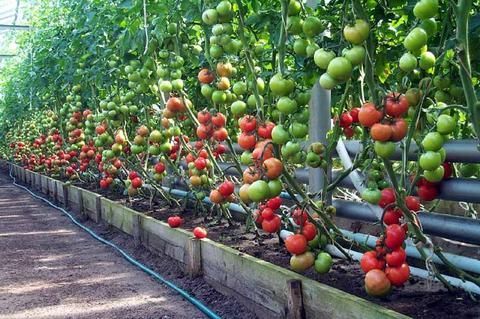
If the seedling period falls on September - October, then the seedlings will require more additional lighting, since at this time the daylight hours are significantly reduced. If sowing tomato seeds is planned for the end of November - December, then the main plant growth will occur in January - February, when daylight hours increase and costs associated with additional lighting can be reduced.
For sowing tomato seeds For seedlings, it is most convenient to use special cassettes - seedlings or peat tablets. As soon as the seeds begin to germinate on the fifth to seventh day, the seedlings will need additional lighting. In the first days, it is advisable to illuminate the seedlings for 24 hours, gradually reducing this time to 16 - 12 hours.
Also at this time, seedlings need a higher concentration of carbon dioxide. In industrial vegetable production, special generators are used; in small greenhouses, you can place a container with fresh manure filled with water. When this mixture ferments, carbon dioxide will be released.
The development of tomatoes depends on the quality and quantity of roots, so seedlings need picking. At the stage of the appearance of the true leaf, the seedlings are planted in separate pots.To increase root formation, the stem is bent and the roots appear upside down, after which everything is covered with soil.
At the age of 20 days, seedlings begin to grow rapidly and need feeding. A nitrogen-phosphorus-potassium mixture diluted with water is suitable for this. It should be added the second time when the seedlings already have four true leaves. As soon as the seedlings have at least five to six true leaves, it is time to plant them in the beds of the winter greenhouse.
Transplanting seedlings to a bed in a greenhouse, fruiting
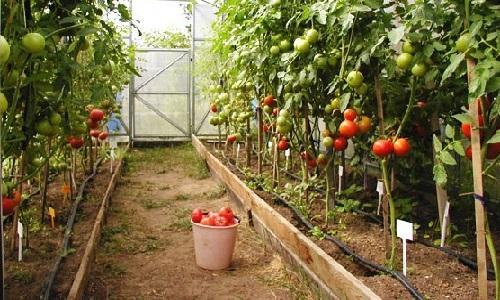
To plant in the ground, you will need to make holes and water them generously at the rate of 0.5 - 0.8 liters of water per plant. You can also add several tablespoons of humus obtained as a result of the work of Californian worms into the hole. The distance between adjacent holes and between rows should be at least 50 cm, and when growing varieties with powerful stems - up to 70 cm.
The use of indeterminate varieties of tomatoes for growing in greenhouses in winter requires their obligatory gartering and removal of shoots. To secure the stem to the trellis, it is convenient to use special clips; this greatly facilitates the removal and removal of the tops after fruiting has ended.
Important in winter growing in a greenhouse has air access to the root system, it is necessary to remove all lower leaves and regularly pull out weeds while simultaneously loosening the soil.
Spraying flowers with a special drug - a fruit formation stimulator, such as Tomaton - will help increase the number of ovaries. This can be done with a simple brush or hand sprayer.
At the end of winter, it is necessary to protect the tomato ovary from sunburn by creating shade on especially sunny days.
In addition to growing tomatoes in a greenhouse in traditional garden beds, you can use modern growing methods such as aeroponics and hydroponics. This not only increases the yield, but also eliminates the need to prepare the soil and treat the beds from weeds and insects.
You can grow tomatoes in winter not only for your family’s needs, but also use them as small-scale vegetable production for sale to the public. Given the modern range of prefabricated greenhouses, this will not be so difficult.
Technology of greenhouse tomato growing on video:
Interesting information about the vegetable garden

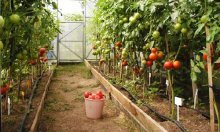
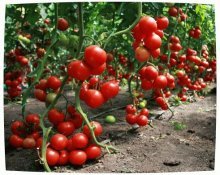
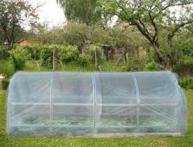

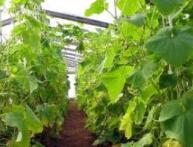

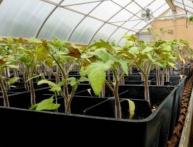
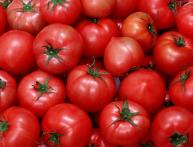


Comments
hi, can you tell me what to use to protect against pests? I will be very grateful for your answers